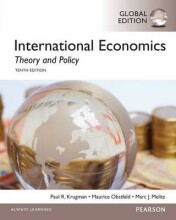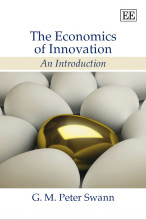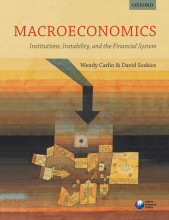Summary: International Economics: Theory And Policy (Global Edition) | 9781292019550 | Paul R Krugman, et al
- This + 400k other summaries
- A unique study and practice tool
- Never study anything twice again
- Get the grades you hope for
- 100% sure, 100% understanding
Read the summary and the most important questions on International Economics: Theory and Policy (Global Edition) | 9781292019550 | Paul R. Krugman; Maurice Obstfeld; Marc J.. Melitz
-
3 Labor productivity and comparative advantage: the ricardian model
This is a preview. There are 18 more flashcards available for chapter 3
Show more cards here -
What does the difference in opportunity costs offer?
The possibility of a mutually beneficial rearrangement of world production. -
Explain the relationship between international trade and comparative advantage
International trade allows each country to specialize in producing the good in which it has a comparative advantage. If the opportunity cost of producing that good in terms of the other goods is lower in that country than in other countries. -
What is the main assumption behind the Ricardian model?
International trade is solely due to international differences in the productivity of labor. -
How is labor productivity expressed?
In terms of the unitlabor requirement , which is the number of hours oflabor required to produce one unit of a good. It is the inverse of productivity. -
What does the production possibilities frontier show?
Thetrade-offs made for production (because resources are limited) illustratedgraphically . When the PPF is a straight line, the opportunity cost of x in terms of y is constant: a_LX/a_LY. -
How are wages determined?
Px/a_Lx and Py/a_Ly. The wages for sector x will be higher when Px/Py > a_Lx/a_Ly. The economy will specialize in x. -
What is general equilibrium analysis?
Takes into account the linkages between the two markets. -
Describe the pattern of the RS curve
There is no supply of x if the world price dropped below a_Lx/a_Ly. When Px/Py = a_Lx/a_Ly, Home is willing to supply any relative amount of goods and this corresponds to a flat section of the curve. The RS of x is (L/a_Lx)/(L*/a*_Ly) for any relative price between a_Lx/a_Ly and a*_Lx/a*_Ly. For Px/Py > a*_Lx/a*_Ly, both countries specialize in x. -
Think of trade as an indirect method of production
Px/Py > a_Lx/a_Ly if neither country produces both goods. -
How does international trade influence the relative wage rate?
The wage rate lies between the ratios of the two countries' productivities in the two industries because the relative wage between the relative productivities that each country ends up with a cost advantage in one good.
- Higher grades + faster learning
- Never study anything twice
- 100% sure, 100% understanding
































